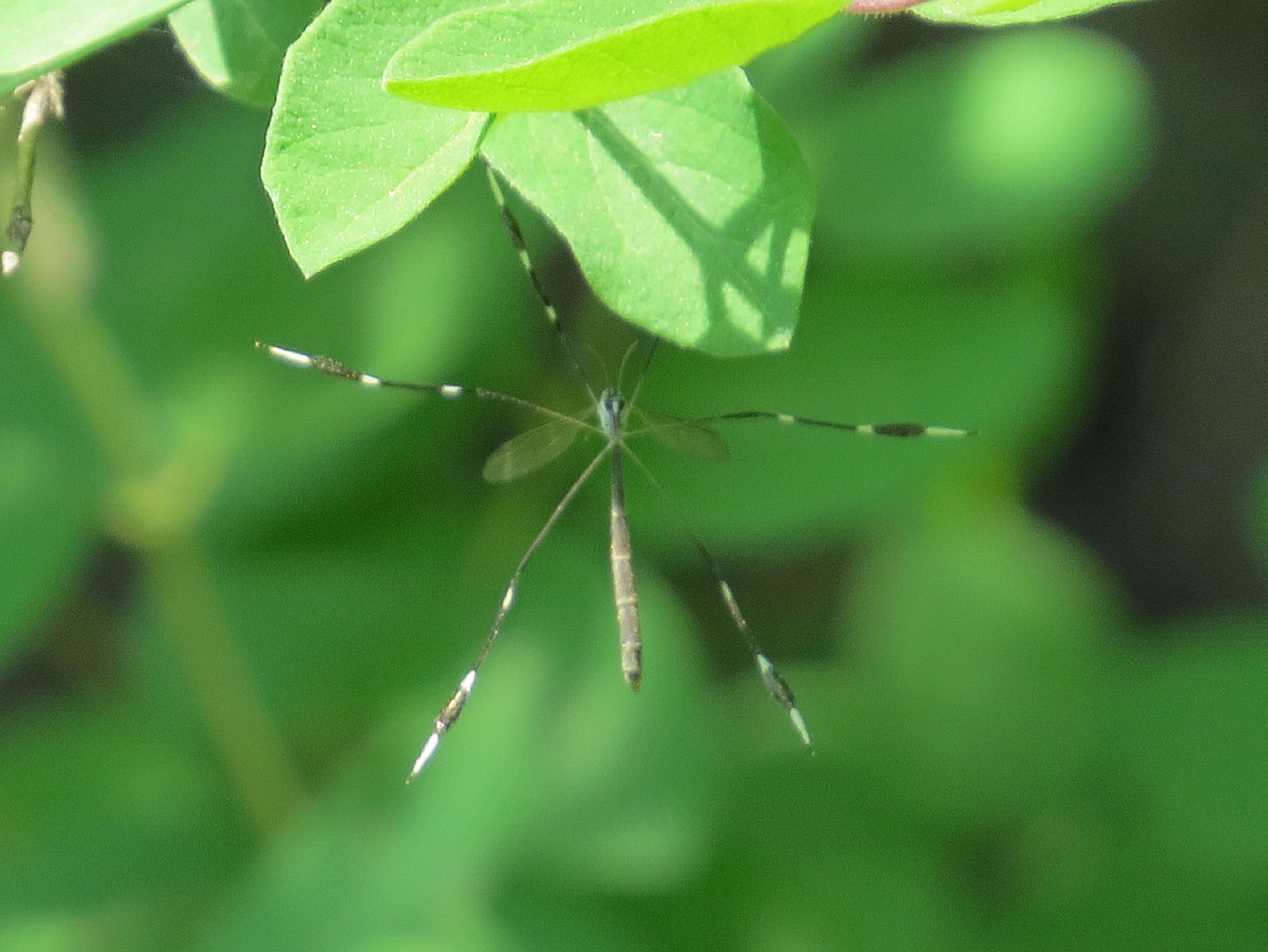
Phantom Crane Fly
Notes and Changes since last report
- It was 85°F, clear and calm at 1:00 PM on May 19, 2021.
- This week's trail report covers the Wappinger Creek Trail side of the trail system.
- Common ringlet and zabulon skipper were back, and pearl crescent was out by the dozen.
- Yellow lady's slipper was blooming in the Fern Glen.
The Trails
- The oaks at the Gifford House trailhead were finally pushing out new leaves.
- Spittle bugs were back on the bedstraws.
- Pearl crescents were courting, feeding or flying in all open areas.
- One place to find them was on all the buttercups in the paths.
- In sunny areas, wild geranium had started blooming.
- Down by the foundation of the old pump house, the viburnum, nannyberry had finally started blooming.
- After years of narrow escapes and imposters, a phantom crane fly was finally captured... by camera. They fly with their legs outstretched, indeed using them in flight.
- The more conventional common ringlet had returned.
- In the Sedge Meadow, tussock sedge tassles had vanished.
- However, cinnamon fern was developing its namesake fertile fronds.
- In the back Old Hayfield, the air was heavy with Russian olive.
- The dense, showy flower clusters are much more noticeable than the small, green fruit.
- In the back of the field, the flowering dogwood seemed to still be doing well.
- In the foreground, golden Alexanders were up and blooming.
- Along the edge, burning bush was still sporting its obscure flower.
- A little patch of golden ragwort was off in the shade.
- Even though the air was dry, 80 plus degrees was a bit much after so much cool weather. The view of the Wappinger Creek was refreshing.
- Blackpoll, redstart, and black and white warbler were calling, but only the latter showed itself.
- Farther along, by the Watershed kiosk, eastern phoebe was not shy.
- Along the side of the trail was a good example of a crowfoot species - a less showy group of the buttercup family.
- And then there are grasses. This one stood out nicely in sunny patches in the woods.
- Up ahead, a Louisiana waterthrush was working along the creek banks.
- Japanese primrose is a prolific invasive of wetlands. Its seed is like dust.
- An invasive that handles moist and dryer soils is narrow-leaved bittercress, just now beginning to bud.
- With pale, narrow leaves in dry conditions it is hard to recognize, but the clasping stipule at the leaf base makes it distinct even from similar cresses.
- Next week: the Cary Pines Trail side of the trail system.
Sightings
Birds
| Butterflies
Plants
|
